| Columns Retired Columns & Blogs |
on some fora -- it's been reported that Stereophile panned the M28...that is not my inference after reading the review proper.
I performed a full set of measurements on the M28 (serial number 1006) using my Audio Precision SYS2722 system (see www.ap.com and the January 2008 "As We See It"). As the Bricasti amplifier is specified as having a maximum output power of 200W into 8 ohms, I preconditioned it before the measurements by running it at one-third that power, 67W, into 8 ohms for an hour, following which the top panel was warm, at 99.3°F (37.4°C), and the side panel covering the internal heatsink was only slightly hotter, at 106.7°F (41.5°C). The THD+noise percentage at this power level was 0.0017% with the amplifier cold, 0.002% with it fully warm.
The voltage gain at 1kHz into 8 ohms was 26.9dB with a balanced input signal, 26.65dB with an unbalanced signal, and the amplifier preserved absolute polarity (ie, was non-inverting) for both inputs. The rear-panel level-trim control applied three attenuation steps, each of 6.1dB. The unbalanced input impedance was a usefully high 88k ohms at 20Hz and 1kHz, dropping slightly to 36k ohms at 20kHz. The balanced input impedances were twice these values, as expected. The output impedance, including 6' of speaker cable, was very low, at 0.05 ohm at low and middle frequencies, rising to 0.06 ohm at the top of the audioband. As a result, the variation in response due to the interaction between this source impedance and the impedance of our standard simulated loudspeaker (see www.stereophile.com/content/real-life-measurements-page-2) was just ±0.05dB (fig.1, gray trace). The response was perfectly flat in the audioband, and down by 3dB at 180kHz into 8 ohms (blue trace). As a result, the M28's reproduction of a 10kHz squarewave was essentially perfect, with no overshoot or ringing (fig.2). Fig.1 was taken with balanced drive; with unbalanced drive (fig.3), the response had a small, +0.18dB plateau in the treble, and the ultrasonic output rolled off a little earlier than with a balanced input signal.
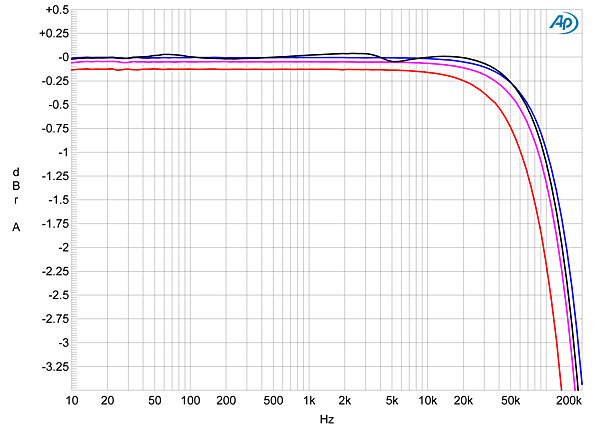
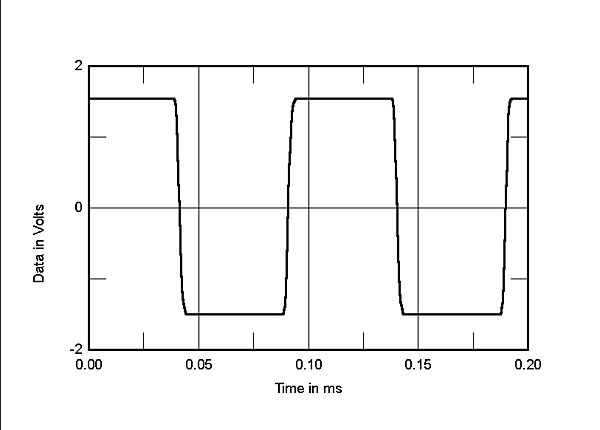

The Bricasti M28 is a very quiet amplifier. Its unweighted wideband signal/noise ratio, ref. 1W into 8 ohms with the input shorted, was 80.5dB, improving to 84.7dB when the measurement was restricted to the audioband, and to 85.7dB when A-weighted. Spectral analysis of the amplifier's low-frequency noise floor while it drove a 1kHz tone at 1W into 8 ohms (fig.4) revealed that the power-supply–related spuriae were 60Hz and its odd harmonics—generally due to magnetic interference from the power transformer—but even the highest in level lay at just –110dB (0.0003%).

Figs. 5 and 6 plot the percentage of THD+noise against output power into 8 and 4 ohms, respectively. With clipping defined as the point at which the THD+N reaches 1%, the M28 exceeded its specified power of 200W into 8 ohms (23dBW), clipping at 250W (24dBW). Into 4 ohms, the Bricasti amplifier clipped at 490W (23.9dBW). When I tested the clipping behavior into 2 ohms, the M28's protection circuit operated at 128W into that load (fig.7). Turning the amplifier off and on again restored normal operation.
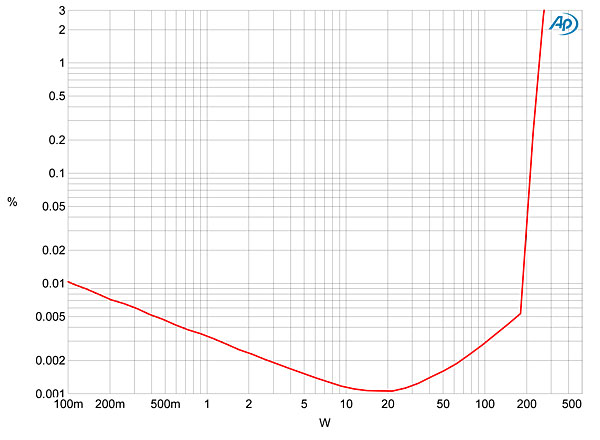
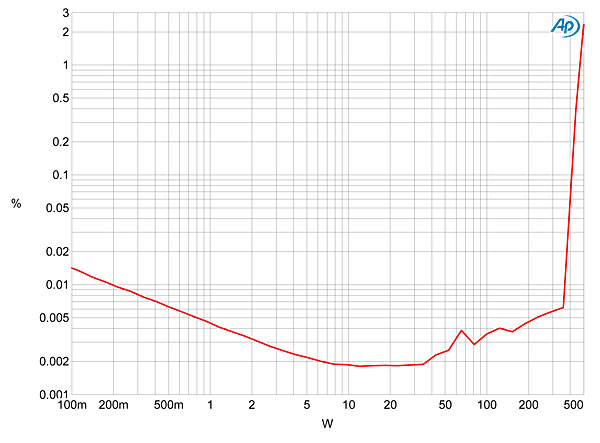
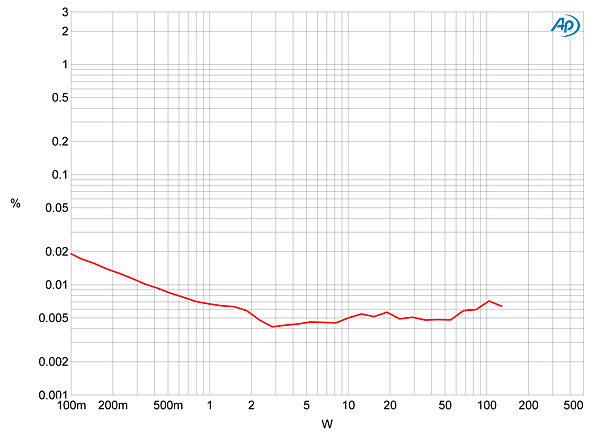
The downward slope of the traces below 10W or so in figs. 5 and 6 suggests that even with the low noise, the M28's actual distortion lies below that noise floor. Therefore, to be sure I was measuring actual distortion, I examined how the amplifier's THD+N percentage varied with frequency at 9V, which is equivalent to 10W into 8 ohms, 20W into 4 ohms, and 40W into 2 ohms. The results are shown in fig.8: the THD is superbly low at or below 1kHz, even into 2 ohms (red trace), but rises slightly in the treble, presumably due to the circuit's decreasing amount of gain-bandwidth margin reducing the amount of corrective negative feedback available. But even at 20kHz into 2 ohms, the THD+N is still just 0.04%.
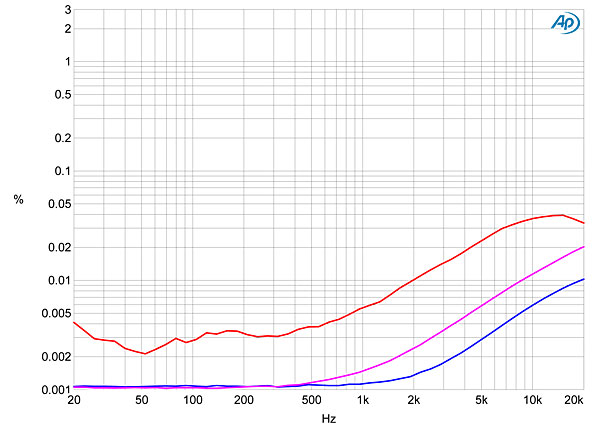
The distortion signature was predominantly third-harmonic in nature (fig.9), though fig.10 reveals that, even at 40% power into 4 ohms, this lay at –90dB (0.003%). Even with the slight rise in THD in the top octave, intermodulation distortion with an equal mix of 19 and 20kHz tones at a level a few dB below visible waveform clipping on the oscilloscope into 4 ohms was very low (fig.11). The difference component at 1kHz lay at just –112dB below the peak signal level (0.00025%), and the higher-order products at 18 and 21kHz were at –97dB (0.0014%).
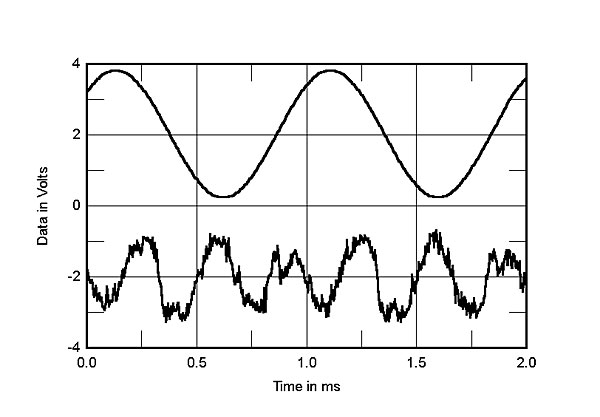
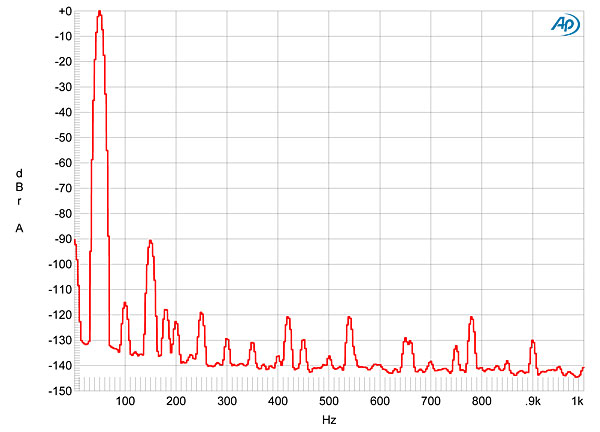
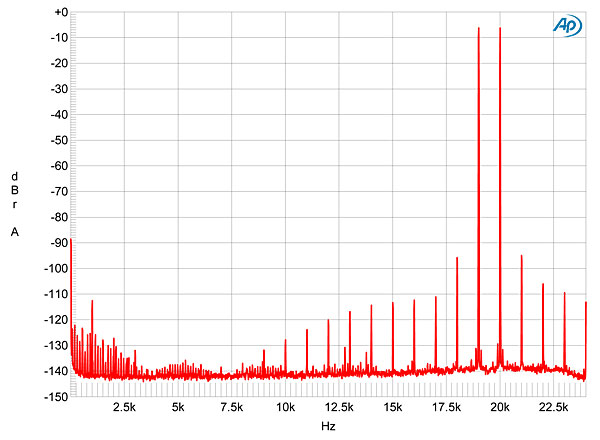
Its measured performance reveals Bricasti's M28 to be a worthy stablemate to the company's superb-measuring and equally superb-sounding M1 D/A processor.—John Atkinson

on some fora -- it's been reported that Stereophile panned the M28...that is not my inference after reading the review proper.

...or did the Bricasti sound just like the old crop of Mark Levinson gear?
Where did I hear the slightly subdued treble, the overall dark sound and the longish and somewhat less controlled bass? Well in older ML designs, of course!
While some may love it and some may like to go back to it, I certainly prefer the sound of the new ML gear... so sorry for ML (the man) but enthusiastic about ML (the company).

The print magazine has the manufacturer's response, which is interesting and relevant although not included above. Since it has been posted on some audio forum websites it's probably fair to post a link to it.

The print magazine has the manufacturer's response, which is interesting and relevant although not included above.
I have added it to this Web reprint.
John Atkinson
Editor, Stereophile

Thank you, John.
It's even handed and honorable of you to do so.

Though I've never heard or listened to the M28, I have to agree with the manufacturer's response and logic. The M28 has much lower distortion and precise reproduction of high frequency signals like the 10kHz square wave. Michael's reference system has much higher distortion and slower in its electrical transient response so maybe that's what he's used to and prefers obviously. Nothing wrong with that but to slam the M28 as of "hi-fi" quality based on its measured performance is definitely wrong.

".....darTZeel NHB-18NS preamplifier, I didn't feel the M28s' performance would be in any way compromised...." . Maybe you listening the darTZeel character(distortions), not the M28's.

Is the bass softness character caused by the transformer coupled balanced preamp? I reckon transformer coupled balance has rather narrow bandwidth that may cause compatibility issue. It is not a good idea to use transformer coupled balance preamp for evaluating downstream equipment, particular the downstream balance is designed around typical electronic based balance circuit.

Matching of components is very important and so do the cables as well. i am a Bricasti M1 user for last two years and Sim 650D with 820S is my another DAC, transport is MBL1621A. i always prefer 650D for detail but the comparatively with higher noise floored M1 is very involving with rock based music. sometimes its made me paranoid which one to play, yes it sometime destroying my pleasure of listening when it comes in terms of choosing DAC. NOW .. very recently i ordered MBL6010D with 5011 pree trade in. so i force to use my old Restek Concence pree, and Bricasti playing like a topnotch compare with sim 650D with it. So i simply demand using M28 with some other pree and setup and ofcorse with different speaker and please don't pick Dynaaudio. its hard to except M28 is slow player. but it could be, yet its too early to comment.